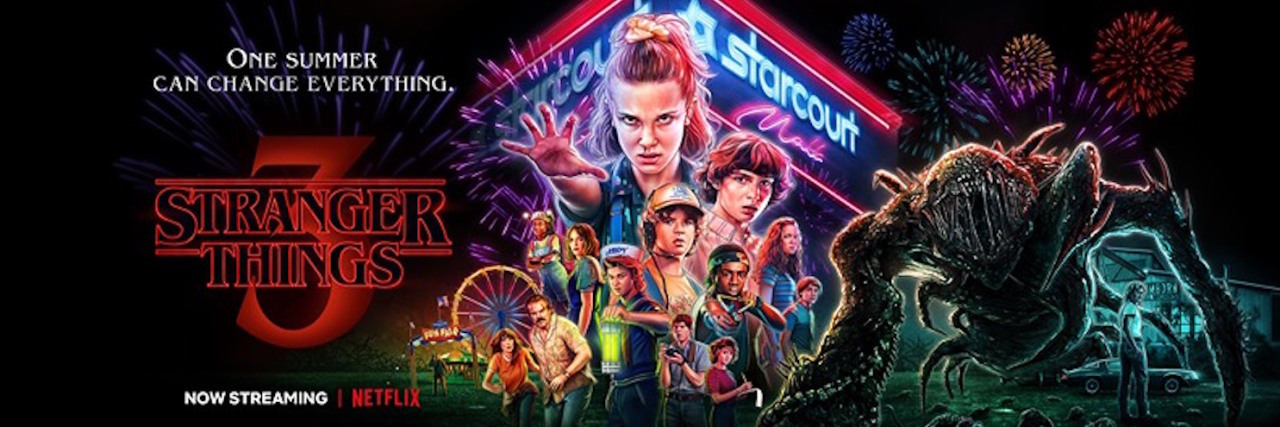On Thursday, the much-anticipated third season of the Netflix’s “Stranger Things” premiered, prompting many to begin marathon-watching the newest eight episodes of the science fiction-horror series.
Unfortunately, not everyone made it past the fourth episode. Despite a trigger warning, several episodes of the show used lighting effects that might be harmful if you live with health conditions like epilepsy or migraine.
Viewers of the show were quick to notice “Stranger Things” episodes “Chapter Five: The Flayed” and “Chapter Six: E Pluribus Unum” both came with a warning under the episode’s rating. It reads: “Some scenes have a strobing effect that may affect photosensitive viewers.”

For some, lights that have a strobing, pulsing or flashing effect can be bothersome to look at. For others, however, these effects can be harmful due to underlying health conditions such as migraine, epilepsy or other conditions that cause seizures.
Epilepsy is a neurological disorder characterized by recurrent, unprovoked seizures. According to The Epilepsy Foundation, exposure to flashing lights or certain visual patterns can trigger seizures in about 3% of people with epilepsy. This is referred to as photosensitive epilepsy.
Migraine, also a neurological disorder, often involves severe pain or throbbing in the head, but can include a wide range of symptoms. Some people with migraine may find bright or flashing lights can trigger a migraine attack or cause symptoms to intensify.
Several “Stranger Things” viewers took to social media to thank show creators for providing a trigger warning for the strobe lights. This advance notice allows individuals to turn off the episode before the strobe lights begin if the effects would be harmful to their health. This could help many avoid flare-ups of symptoms, and for some, it could be lifesaving.
Did you see it? No spoilers here, but #Netflix does include a photosensitivity / strobe warning before "Stranger Things," which premiered this week.
Thank you to all those involved for being mindful about how their show impacts people with light sensitivity! ???? #StrangerThings3 pic.twitter.com/MfNW4t1Jhg
— TheraSpecs (@TheraSpecs) July 5, 2019
A warning is exactly what Mighty contributor Shannon DeRose asked for back in 2016, after the first season of “Stranger Things” premiered. DeRose lives with a progressive terminal rare disease that causes seizures, and as a result, was unable to watch the show. In her essay, “To the Creators of ‘Stranger Things,’ From a Netflix Fan With Seizures,” she wrote:
What I want is simple… a warning. I want to be able to look at something and see, ‘There is about to be flashing lights,’ or ‘This show could trigger seizures or migraines.’ And most of all I want you to somehow say, ‘I’m sorry for the inconvenience.’
Two seasons later, Netflix and “Stranger Things” show runners did include a warning for fans like DeRose. However, while including a trigger warning is an important step forward in considering the needs of people with disabilities, sensitivities and other triggers, some viewers felt the prolonged use of strobe lights was excessive, unnecessary and still exclusionary.
Ok @netflix were all the strobe light effects on stranger things really necessary? thanks for the warning but that doesn’t negate the fact that all the best intense scenes were completely unwatchable
— annika josephson (@annikaemj) July 5, 2019
The trigger warning allows people to opt out of episodes that might be physically harmful, but in the case of “Stranger Things,” it also precludes them from being able to watch two entire episodes of the series because of their health. Viewers with disabilities and other health conditions are still left out.
In her essay, DeRose commented the worst part of being unable to watch the show was feeling like she “wasn’t in on something.” “I miss out on weird things … and I would love to watch ‘Stranger Things,’” she wrote. DeRose added:
And a warning to you, Netflix, is that seizures triggered by flashing lights isn’t that rare. There are others like me. We don’t get to watch the show. We feel left out by the over-looked world we have to live in.
I’m not mad at you. I love you, Netflix. I’m always up for Netflix! You do so much good and made hospital stays wonderfully easier and make me able to watch shows over and over again. But please don’t overlook the triggers of seizures or migraines or anything else. It’s hard enough.
Lead image via “Stranger Things” Facebook page

